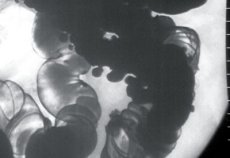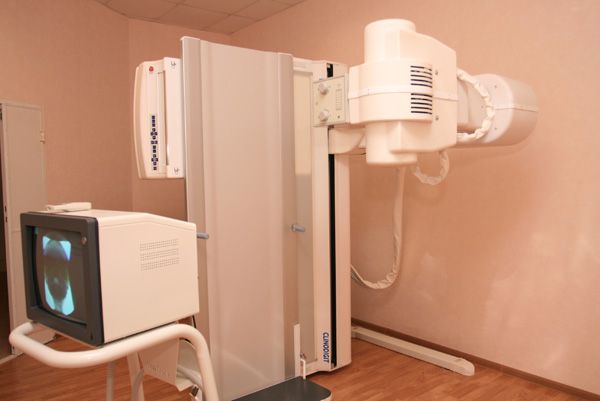
All iLive content is medically reviewed or fact checked to ensure as much factual accuracy as possible.
We have strict sourcing guidelines and only link to reputable media sites, academic research institutions and, whenever possible, medically peer reviewed studies. Note that the numbers in parentheses ([1], [2], etc.) are clickable links to these studies.
If you feel that any of our content is inaccurate, out-of-date, or otherwise questionable, please select it and press Ctrl + Enter.
Irrigoscopy
Medical expert of the article
Last reviewed: 04.07.2025

Irrigoscopy is used for a detailed and thorough examination of the intestines. Traditional X-rays are not always suitable for this, since the intestines are very difficult to see against the background of surrounding organs and tissues, they are not radiopaque. What is the essence of irrigoscopy and how does it help fight intestinal diseases?
The essence of irrigoscopy
This method of examining the digestive tract, in particular the intestines, irrigoscopy is translated from Latin as irrigatio — I water, irrigate and from Greek - skopeo — I observe, examine. That is, irrigoscopy is carried out using a special liquid that is introduced into the rectum - barium sulfate. It is introduced by means of an enema.
This is not the only method of introducing contrast into the rectum. Barium sulfate can also be taken orally. After taking it, 3-4 hours must pass, and then the contrast agent ends up in the cecum. After that, it gradually moves throughout the entire intestinal area. It takes 4 to 6 hours to move through the right half of the cecum, and another 5-6 hours to move through the left half of the colon. Then, 12-15 hours after the initial intake of barium sulfate, this substance finally enters the rectum.
Then all areas of the intestine can be diagnosed. The intestine does not absorb barium sulfate, and this substance can be excreted from the body within 1-2 days, and in an unchanged form.
 [ 1 ]
[ 1 ]
Is irrigoscopy dangerous?
No, doctors and patients claim that this diagnostic method requires a small amount of X-rays, much less than a regular X-ray examination. The procedure is absolutely painless and does not require anesthesia.
For those who are concerned about the safety of the procedure, it is important to know that an irrigoscopy requires a much lower dose of radiation than, for example, a CT scan. How long the procedure takes and how much radiation to use is decided by the radiologist.
How to prepare for an irrigoscopy?
Two days before the procedure, the patient must follow a so-called slag-free diet - that is, exclude beans, fresh vegetables and fruits, and cabbage in any form or degree of preparation from the diet.
The day before the procedure, the patient takes castor oil to cleanse the intestines. It will take up to 30 grams per day. Before the irrigoscopy itself, a cleansing enema should be done in the evening. You cannot eat after the enema. In the morning of the next day, you can eat a light breakfast and do another cleansing enema. Then you can proceed to the irrigoscopy itself.
 [ 2 ]
[ 2 ]
Duration of the irrigoscopy procedure
It depends on the number of images required for the doctor's assessment. On average, the examination takes between five and ten minutes.
How is an irrigoscopy performed?
Barium sulfate (its aqueous suspension) is administered to a person through the rectum or orally. It acts as a contrast agent in the rectum. Barium sulfate is diluted as follows: 1600 ml of water per 400 grams of barium powder, up to 2 g of tannin is added. This substance is heated to a temperature of 33 degrees Celsius and administered through a special rubber tube.
Then, as the substance passes through the intestines, the doctor can see the condition of the esophagus on the screen. Using a special device, the doctor takes pictures of different sections of the colon in different positions. These pictures can be long-range (overview) and short-range (target).

The patient changes position as recommended by the doctor. Then comes the next stage of diagnostics: the barium sulfate suspension is removed from the intestine, after which the doctor can conduct diagnostics of the relief of the mucous membrane of the colon.
If there is a suspicion of malignant tumors in the colon, it is filled with air by pumping it through a special tube with a non-rigid tip. For this, the Bobrov apparatus is used. This procedure is called double contrasting.
Contraindications for irrigoscopy
Irrigoscopy is contraindicated for patients with significant perforations (destruction) of the colon wall. As well as for patients who are allergic to barium sulfate. And for those patients who are in a chronically serious condition. During pregnancy, the irrigoscopy procedure must be agreed upon with the attending physician.
What does irrigoscopy provide?
During the diagnostics, the doctor will observe how the contrast agent moves through the intestine. What kind of lumens or darker areas it will create will determine how the colon feels, whether there are any foreign bodies, polyps or malignant tumors.
Diagnosis using barium enema can help determine the shape of the colon, its cone, and how it moves over a period of time.
The colon has one feature that distinguishes it from other types of intestines. This is the presence of haustra - expansions of the intestinal tube, which are divided into segments. The transverse colon has the most haustra. And the sigmoid colon in natural conditions is characterized by the fact that it is the most mobile of all other intestines. Irrigoscopy allows you to identify how much the sections, length and location of this intestine change. As well as the presence and nature of the folds of the mucous membrane lining the colon from the inside - during the diagnosis, both transverse and longitudinal folds are studied.
This type of diagnostics allows us to detect tumors in the colon, the presence of polyps, changes in stool, diverticula, which are supplemented by such unpleasant conditions as stool disorders, colitis, and irrigoscopy is also used to check how actively the intestines contract.

